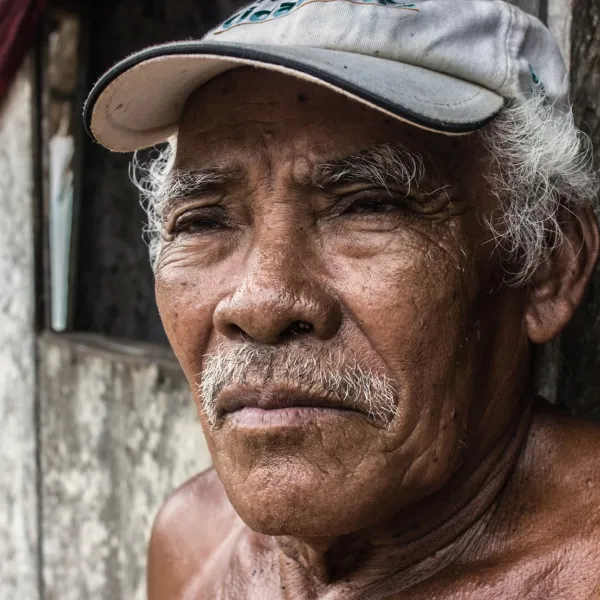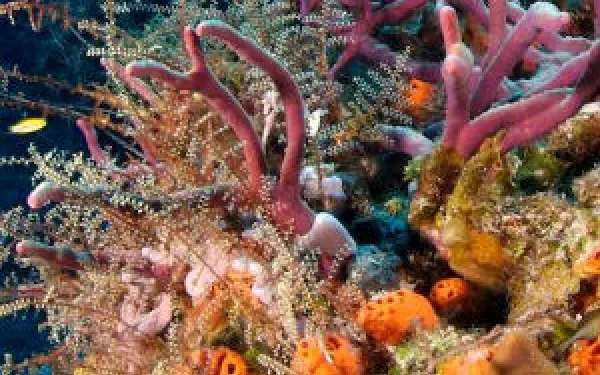
Project
Photo: Maíra Irigaray / Amazon WatchHolding Brazil accountable for the Belo Monte Dam
When fully operational, Belo Monte will be the third-largest dam in the world, constructed in one of the most important ecosystems on the planet: the Amazon rainforest. It sits on the Xingu River in Pará, a state in northern Brazil. The reservoir will cover 500 square kilometers of forest and farmland—an area the size of Chicago.
For the people of the Xingu, construction of Belo Monte has meant loss of access to water, food, housing, work and transportation. At least 20,000 people have been displaced.
The government and construction consortium began to construct the dam without first consulting the people of the region, many of whom are indigenous. They flouted international human rights law, which requires the free, prior and informed consent of affected indigenous communities. Brazil also failed to comply with precautionary measures issued by the Inter-American Human Rights Commission, which were intended to protect the life, health, and integrity of local communities.
Though Belo Monte began operations in May 2016, it is not yet operating at full capacity. In April 2016, a federal court suspended the dam's operating license because the consortium in charge did not complete basic sanitation works in Altamira, the city nearest to and most affected by the dam.
Partners:

Related projects

The International Coral Reef Initiative and the role of AIDA
By Sandra Moguel, legal advisor, AIDA, @sandra_moguel Made up of government representatives, scientists and civil society members, the International Coral Reef Initiative (ICRI) meets annually to discuss and make decisions on priority issues regarding the protection of international coral reefs. This year the meeting was held in Belize from October 14 to 17, hosted by ICRI Secretariat co-chairs Australia and Belize. The ICRI describes itself as an informal partnership between nations and organizations. It was created out of concern for the degradation of coral reefs, mainly as a consequence of human activities including land pollution, anchoring and more. Its objectives are to: 1) Encourage the adoption of best practices in the sustainable management of coral reefs and associated ecosystems; 2) Build capacity; and 3) Raise awareness at all levels on the plight of coral reefs around the world. Although ICRI decisions are not binding among members, they have been crucial in highlighting the important role of coral reefs and similar ecosystems in guaranteeing environmental sustainability, food security and social and cultural welfare. In its own documents, the United Nations has recognized the work and cooperation efforts of the ICRI in the international area. Much of AIDA’s work runs in parallel with the ICRI’s efforts. AIDA’s Marine Biopersity and Coastal Protection Program aims to ensure that Latin American coral reefs are legally protected and managed in a way that safeguards their biological integrity. This was reason enough for us to apply for ICRI membership so we could take part in this platform for dialogue. By participating in Belize, AIDA sought to identify opportunities to expand our work in high-priority countries and islands in the Americas. We also think it is important that the ICRI should take into account our expertise in international law and our partnerships with participating organizations. It is also key to apply a legal framework to the ICRI discussion, and there are some interesting ad hoc committees involved in the initiative that could explore this aspect. We are particularly interested in the economic value of coral reefs and similar ecosystems, a topic that also addresses the issue of compensation. Another interest is in the law enforcement committee that performs research on the assessment of the evidence and standardization of rules in different countries. Colombia, Costa Rica, Granada, Panama and the Marine Ecosystem Services Partnership (MESP) all attended the ICRI meeting in Belize as new members. Ricardo Gómez, Mexico’s representative to the ICRI, made a formal presentation of his paper entitled Regional Strategy for the Control of Invasive Lionfish in the Wider Caribbean[1]. In addition, the International Union for Conservation of Nature (IUCN) presented its paper Status and Trends of Caribbean Coral Reefs: 1970-2012, edited by Jeremy Jackson, Mary Donovan and others. The paper looks at the changing patterns in coral reefs such as overfishing, coastal pollution, global warming and invasive species. The analysis concludes that rising tourism and overfishing are the most apparent causes of coral decline over the past 40 years. Coastal pollution is undoubtedly increasing, but no specific data are available to properly estimate its effects. Global warming also is a threat, but its effect was found to be of limited importance for now in the study. As a result of the study, the delegates approved a motion to ban fish traps, spearfishing and parrotfish fishing throughout the wider Caribbean and its adjacent ecosystems, and provide economic alternatives for affected fishermen. It also prompted a proposal to increase co-management agreements between government and civil society. At the meeting the delegates also discussed a simplification and standardization for monitoring the reefs and to make the results available in a database to facilitate adaptive management. It would be accompanied by a data exchange for local managers to benefit from others’ experiences. At the closing of the event, the delegates revised the ICRI Action Plan and held a ceremony to transfer the Secretariat responsibilities to Japan and possibly Thailand, which will be in charge of the administration of the ICRI in 2014. I really enjoyed working with my colleague and friend Haydée Rodríguez, another legal advisor at AIDA, who I talk with on a daily basis even though we live in different countries. I very much enjoyed discussing the scientific and management aspects of the coral reefs with experts in the protected marine environments of different countries. Although faced with similar problems, they resolve them in different ways because the same solutions cannot always be replicated in different contexts. In my point of view, the biggest challenge the ICRI faces is financing its platform. I also think it’s important to invite new members to encourage a greater representation from the government, scientific and civil society communities. [1] ReadEl Pez León y la necesidad de combatir especies invasoras(in Spanish, 20-noviembre-2012).
Read moreBrazilian Federal Court rules for public scrutiny over BNDES loans
Unprecedented decision calls for transparency in use of taxpayer funds, critics say. Rio de Janeiro, Brazil. A federal appeals court based in Rio de Janeiro (TRF-2) has ruled that the Brazilian National Development Bank (BNDES) must publicly disclose technical reports used for justifying approval of major loans. The court decision was provoked by a lawsuit filed in 2011 by Folha de São Paulo, one of Brazil’s largest newspapers, after BNDES refused a request for access to “analytical reports” produced by bank staff to appraise loans above BRL 100 million (USD 46 million) approved between January 2008 and March 2011. The reports analyze the situation of intended borrowers, justifications for bank financing and credit risks of proposed operations. Despite its status as a public financial institution, ultimately funded by Brazilian taxpayers, BNDES has refused to publicly disclose such documents, citing federal legislation on banking secrecy (Complementary Law no. 105/2001). Last year, a federal judge in Rio de Janeiro, Dario Ribeiro Machado Junior ruled partially in favor of the Folha de São Paulo lawsuit, authorizing public disclosure of reports on BNDES loans to public enterprises, but not on operations involving private companies. The newspaper appealed the decision to the TRF-2, calling for disclosure of all documents, while BNDES also appealed, demanding that all reports on loan operations remain secret. In a 2-1 decision last week, the appeals court determined that reports on BNDES loan operations requested by the Folha de São Paulo should be made public, except for “banking and fiscal information of borrowers”. It is expected that BNDES will appeal the court’s decision. In casting her vote, Judge Carmen Silvia Lima de Arruda of TRF-2 concluded that the Folha de São Paulo possesses a Constitutional right, supported by a previous Supreme Court decision, to request public disclosure of BNDES documents that illustrate criteria for loan approval. Arruda’s decision argues that “in reality, BNDES does not publicize any data relevant to the analysis carried out by its technical departments concerning the opportunity and convenience of loans that have been contracted. The absence of publicity regarding such criteria in the operations of BNDES reveals a system of planned obscurity”. In a similar vein, fellow judge Guilherme Couto de Castro of TRF-2 voted that BNDES documents concerning its loan operations are “essential and of unquestionable public interest; there should be no impediments to the disclosure of such data”. The judge also argued that an unstated goal of BNDES, in denying public access to loan documents, is to avoid disclosure of “favors granted to the friends of the king”. Such mistrust reflects a growing controversy over a marked tendency within BNDES to favor a select group of powerful Brazilian multinational corporate actors in its lending portfolio, while failing to publicly disclose justifications for loan approval and credit risks. A particularly notorious example involves mining and oil tycoon Eike Batista, a so-called ‘national champion’ of the Lula and Rousseff administrations, that was the recipient of BRL 10.4 billion (USD 4.175 billion) in low-interest loans. Once Brazil's wealthiest individual, Batista dramatically fell from grace in 2013 when a series of high-risk business ventures failed to produce high returns promised by the billionaire causing widespread alarm that BNDES had no effective system for managing risks associated with its loans. The TRF-2 decision benefitted from a legal opinion provided by the Federal Public Prosecutors’ Office (Ministério Público Federal - MPF). In a document signed by federal prosecutor Luis Pereira Claudio Leiva, MPF argued that transparency is an essential element of BNDES’ operations, given that it is a public financial institution funded by Brazilian taxpayers that should be financing projects in the public interest. "The performance of BNDES deserves severe criticism due to its manipulation by political interests, with fuzzy criteria that reach the extreme of complacency in the face of defaults by borrowers and concessionaires," he said. “This ruling is a victory for transparency. The bank uses taxpayer money to back some of the riskiest loans in Brazil and abroad, and the costs of so many of these investments end up being shouldered by the public” said Brazilian lawyer Maíra Irigaray Castro, of Amazon Watch. “BNDES must open its books to the Brazilian public. That’s the only way to guarantee that taxpayer funds are used correctly.” In November 2011, the Brazilian Congress passed a bill on public access to information (Federal Law 12.527/2011) within the context of a voluntary multilateral initiative known as Open Government Partnership[1] which allows individuals to request information from government institutions that must be disclosed unless a clear justification can be provided on the need for confidentiality. Civil society organizations have long lobbied for transparency regarding BNDES loans in Brazil and elsewhere – claiming that the public has the right to scrutinize the bank's use of capital obtained from the country’s taxpayers. Particular attention has focused on controversial projects such as the Belo Monte mega-dam complex in the Brazilian Amazon, generously financed through a record-breaking loan package of BRL 25.5 billion (USD 11.6 billion). Despite the new legislation, BNDES has repeatedly denied requests for access to information on key aspects of its loans operations, such as analysis of social, environmental and economic risks. “This decision (of TRF-2) is a positive sign from the Brazilian judiciary that represents a small and important step for human rights protection and accountability of BNDES operations. The bank’s investments in large-scale development projects, such as Belo Monte and other large dams in the Amazon, have had serious impacts on the human rights of communities and on the environment.” said María José Veramendi from AIDA. “Belo Monte, for example, has precautionary measures from the Inter-American Commission on Human Rights because of the lack of protection of indigenous communities that are impacted.” Lack of transparency linked to deficient social and environmental safeguards In February 2012, the federal environmental agency, IBAMA, fined Norte Energia, S.A. a public-private consortium that holds the concession for the Belo Monte dam complex, a total for BRL $7 million for failing to implement required actions to mitigate the social and environmental impacts of the project, as stipulated in licenses granted in 2010 and 2011. The fine, which is under appeal at IBAMA, apparently provoked no concrete action from BNDES to address non-compliance with environmental legislation. During the implementation of BNDES-funded projects, monitoring of human rights and environmental legislation, including compliance with other specific loan conditions, has been notoriously deficient, critics say. When violations have been documented, BNDES has typically failed to take corrective action, including suspension of loan disbursements, unless environmental licenses themselves are suspended by IBAMA or court decision. According to Brent Millikan from International Rivers, suspension of environmental licenses is highly unlikely, given the high levels of political intervention within IBAMA and the judicial system. The number of civil lawsuits filed against BNDES-funded projects for violations of the rights of affected communities, labor legislation at construction sites and environmental legislation has become the focus of increasing attention in Brazil. A just-released study by investigative journals Agência Pública and O ECO identified a total of 80 lawsuits filed by state and federal Public Prosecutors against 17 of 20 large infrastructure projects financed by BNDES in the Brazilian Amazon between 2008 and 2012. According to the report, the most common motivations for lawsuits include defective environmental impact assessments, lack of prior consultations with affected communities as legally mandated, non-compliance with conditions of environmental licenses and violations of workers’ rights at dam sites, including unsafe conditions contributing to accidental deaths. The’ champion’ among infrastructure projects under litigation was Belo Monte, with 21 lawsuits filed over more than a decade. In September, the Federal Public Prosecutor`s Office (MPF) filed a lawsuit that included BNDES as a co-defendant with Norte Energia and IBAMA, citing a chronic failure to assess and mitigate impacts of Belo Monte on the Xikrin indigenous people that live near the dam site on the Xingu River. Further information Read the press release from the Ministério Público Federal on the TRF-2 decision (in Portuguese). Read the article in Folha de São Paulo on their lawsuit demanding transparency at BNDES (in Portuguese). See article on the Folha de São Paulo lawsuit against BNDES with link to the TRF-2 decision (in Portuguese). http://www.migalhas.com.br/Quentes/17,MI188278,101048-Inexiste+sigilo+bancario+em+relatorios+de+financiamento+produzidos Read the Bloomberg story “Batista Collapse Has Prosecutors at BNDES's Door”. See the article by investigative journalists on civil action lawsuits filed against BNDES-funded infrastructure projects in the Brazilian Amazon (in Portuguese). See MPF press release on new lawsuit against violations of Xikrin indigenous rights and environmental legislation at Belo Monte, including BNDES as a co-defendant (in Portuguese). [1] http://www.opengovpartnership.org/
Read moreDams, mines threaten indigenous rights: Recommendations from UN human rights expert
By Jessica Lawrence, Earthjustice's research analyst A longstanding goal of Earthjustice and the Interamerican Association for Environmental Defense (AIDA) has been to sound alarms at the United Nations, in national courtrooms and in international fora such as the Inter-American Commission on Human Rights about environmental and human rights violations associated with mines and dams. Indigenous peoples are particularly vulnerable to the harmful effects of such extractive and energy industries in their territories. Last April, Earthjustice and AIDA provided evidence of these harms, as well as recommendations about how to avoid them, to U.N. indigenous rights expert James Anaya, who recently issued a report on extractive and energy industries and indigenous peoples. Comments from Earthjustice and AIDA focused on mine closure, describing how inadequate closure, restoration or monitoring can cause severe, long-term environmental contamination that can violate indigenous and human rights. We identified steps that countries can take to prevent these problems, including enacting strong laws on pabipty of mine operators and requiring operators to provide financial guarantees to ensure adequate clean-up during and after mine closure. Such measures can help protect human rights to health, clean water and a clean environment, as well as indigenous rights to culture, food, a means of subsistence and their lands and natural resources. Anaya’s report includes a number of recommendations with environmental and health imppcations. Key recommendations include: Guaranteeing indigenous communities’ right to oppose extractive and energy projects without fear of reprisals, violence, or coercive consultations. If a government decides to proceed with a project without their consent, indigenous communities should be able to challenge that decision in court. Rigorous environmental impact assessment should be a precondition. Indigenous communities should have the opportunity to participate in these assessments, and have full access to the information gathered. Governments should ensure the objectivity of impact assessments, either through independent review or by ensuring that assessments are not controlled by the project promoters. Measures to prevent environmental impacts, particularly those that impact health or subsistence, should include monitoring with participation from the pubpc, as well as measures to address project closure. If governments and project operators followed Anaya's recommendations, it would substantially reduce the harm caused to indigenous peoples by the often shameful and irresponsible conduct of extractive and energy industries. AIDA, to which Earthjustice provides significant support, works with local communities to address human rights violations from extractive industries throughout the hemisphere, including the Barro Blanco dam in Panama, the Belo Monte dam in Brazil, the La Parota dam in Mexico, and mines in the Andean ecosystems of Colombia.
Read more